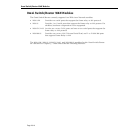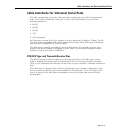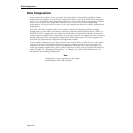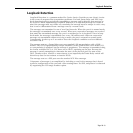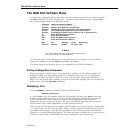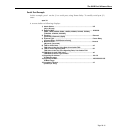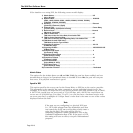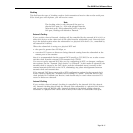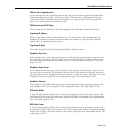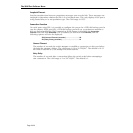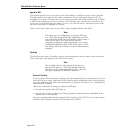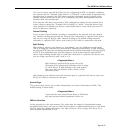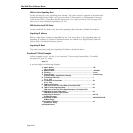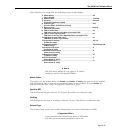
The WAN Port Software Menu
Page 28-18
Split Clocking
Split clocking, which is also known as “loop timing,” uses an additional control signal
(
TXCE) to keep the submodule and external DTE clocking synchronized. In split clocking,
the external DTE takes the incoming transmit clock from the submodule and loops it back
to TXCE. The submodule then uses this signal to clock in data from the external DTE
device. Split clocking should only be used if the submodule is a physical DCE device and
you are using a non-RS-232 cable, such as V.35.
♦ Important Note ♦
Split clocking is required if the access rate of the
submodule port is greater than 256 kbps and it is acting
as a DCE device. If split clocking is not used at these
data rates, data out-of-phase errors, aborts, or CRC
errors may occur.
Split clocking is the default when the
submodule port is a physical DCE device and a non-
RS-232 DCE cable is connected to the port.
Protocol Type
The protocol type can be set to either Frame Relay or Point to Point Protocol (PPP). The
default setting is Frame Relay.
♦ Important Note ♦
A port must be set to either Frame Relay or PPP before
any other protocol-related parameters can be set.
Receive Clock
Often, due to delays added to timestamps in when running through switch hardware, the
receive clock time is significantly different than expected from the transmitting data source.
To correct the problem, it is possible to set the receive clock to invert the delay information.
The following options are available:
Normal
The port uses the internal clock time as the timestamp for receive data (timestamp infor-
mation is not modified).
Inverted
The port uses an inverted timestamp for receive data.
TOS for Voice Data
Set the priority for voice data streams. The value must be entered in hexadecimal format
translated from binary, and can use either IP Precedence or Differentiated Services Code Point
(DSCP). Enter
0 to disable this feature. See Type of Service (ToS) on page 28-2 above for a
more detailed explanation of ToS.



